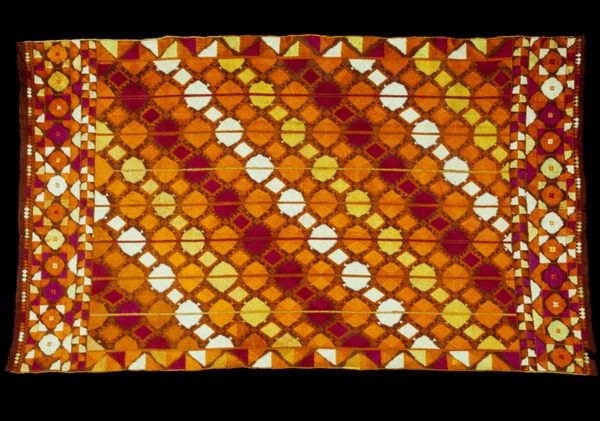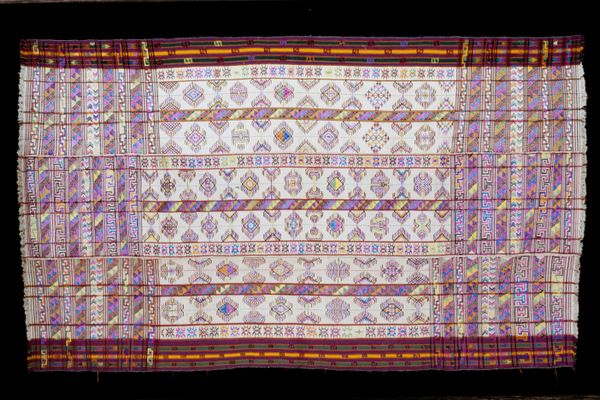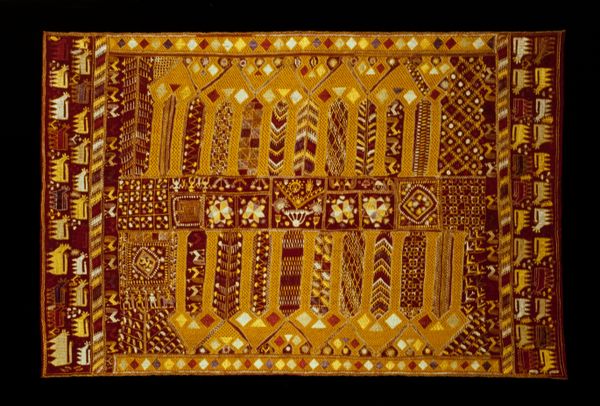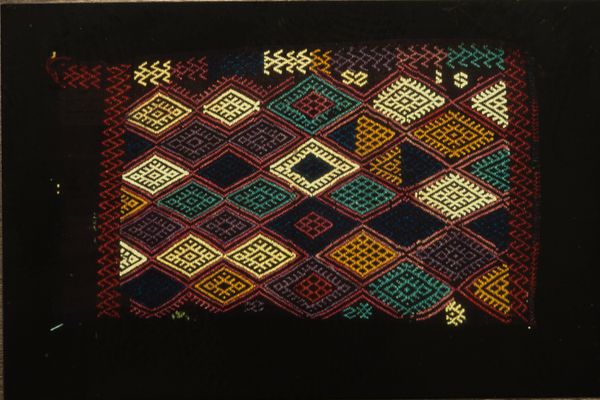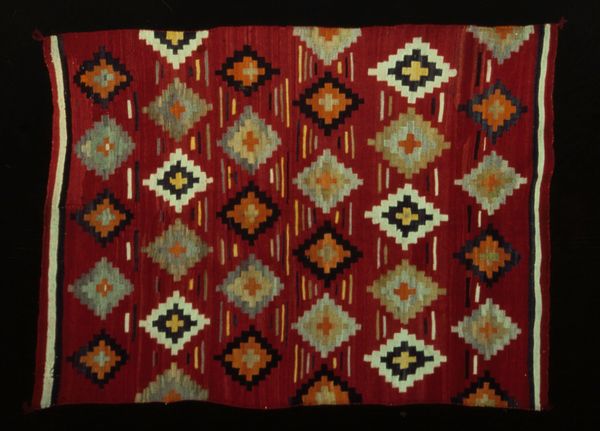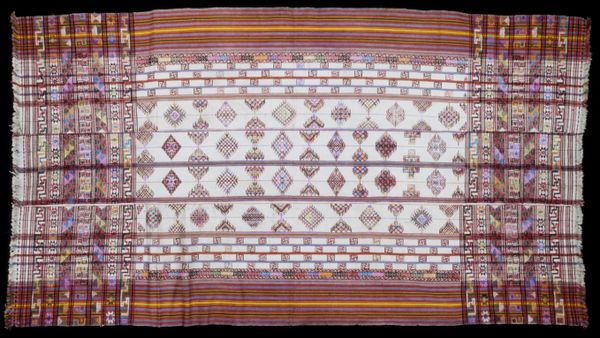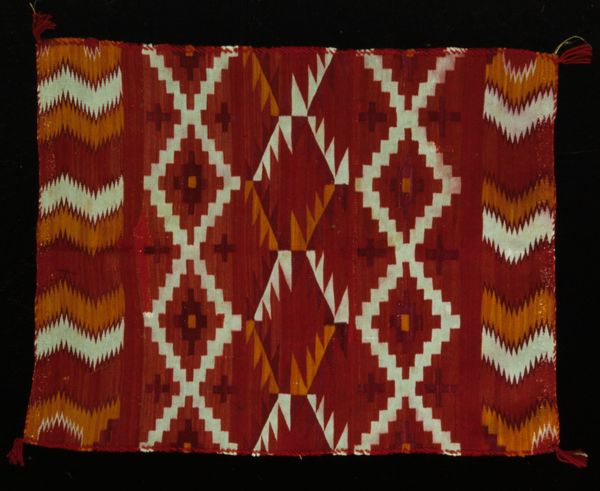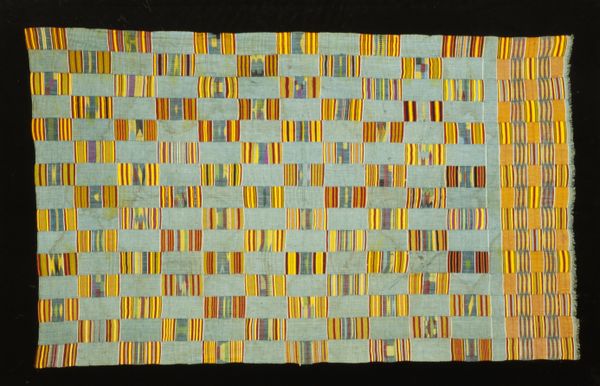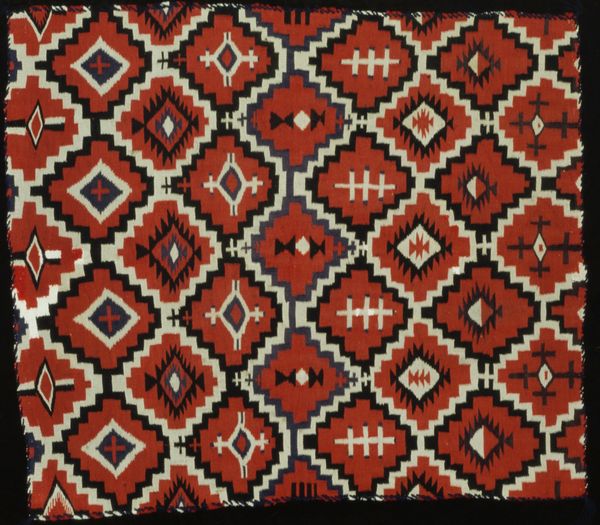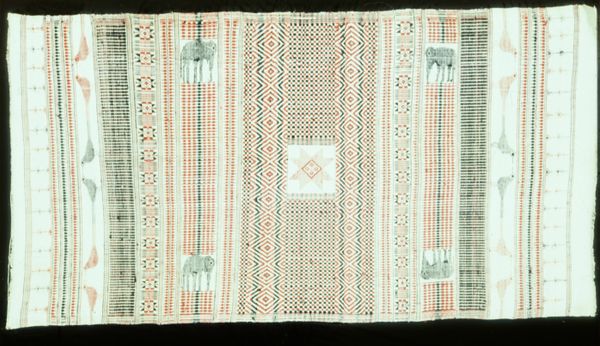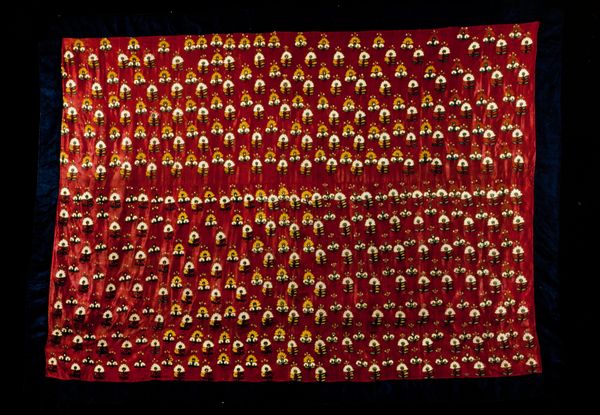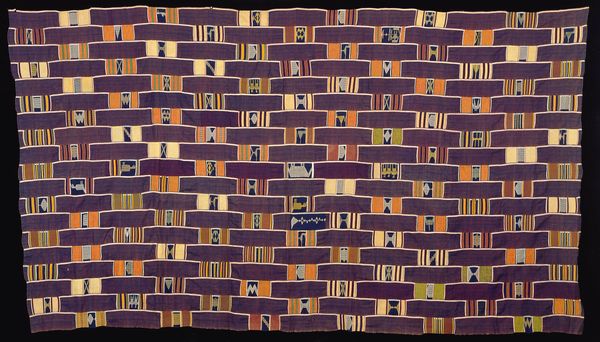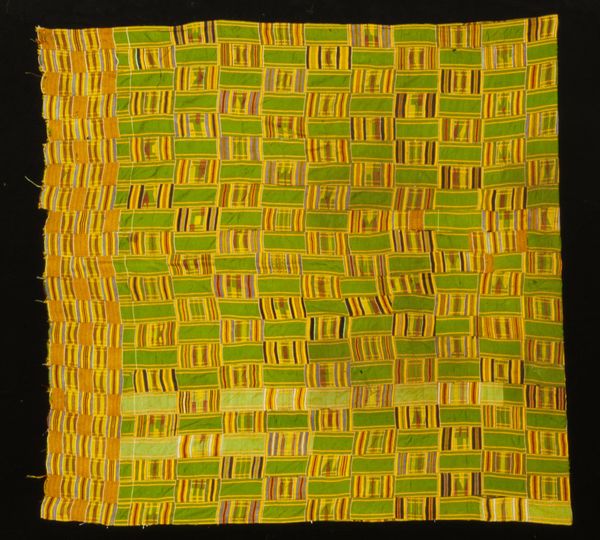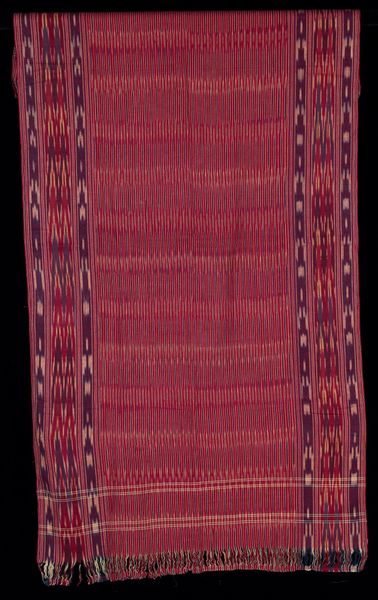
silk, textile, cotton
#
natural stone pattern
#
silk
#
textile
#
geometric pattern
#
subtle pattern
#
abstract pattern
#
minimal pattern
#
organic pattern
#
repetition of pattern
#
vertical pattern
#
pattern repetition
#
cotton
#
layered pattern
Dimensions: 93 1/2 x 50 1/4 in. (237.49 x 127.6 cm)
Copyright: Public Domain
Editor: Here we have a Pulkari, a textile from around the 19th century, made of cotton and silk. What strikes me immediately is the grid-like structure filled with diverse geometric patterns, it almost feels like a sampler. What can you tell me about its context? Curator: It's fascinating, isn't it? A Pulkari like this one embodies the socio-cultural history of the Punjab region. Think about it – textile production was traditionally a woman's domain, a space for creative expression and transmission of cultural values. Each of those patterns isn’t just decoration. They’re visual stories, often reflecting family history, village identity, or even hopes for the future. Editor: So, this textile wasn’t just about function? Curator: Precisely! The production of Pulkari served important social functions such as the transfer of familial and local cultural values to future generations. And consider the patronage: Who was commissioning, who was using and under which socio-political dynamics did these take place? Was it part of a dowry? A gift for a special occasion? Its existence in a museum setting changes its role significantly, removing it from its original context. What do you make of its presence here? Editor: That's a good question. Displaying it here, we're preserving it but also somewhat detaching it from its lived purpose, presenting it as art. Does that shift the original meaning? Curator: Absolutely. It prompts us to consider the power structures at play in the art world – who gets to define what is ‘art,’ and whose stories are told. By placing it here, we hope to expand the traditional definitions of ‘art’ and foster understanding across cultures. Editor: I’ve definitely learned to look beyond the surface design and consider the layered meanings woven into the very fabric of the piece! Curator: Indeed. And that reflection enriches not just our understanding of the piece but also our awareness of the politics inherent in how art is presented and perceived.
Comments
No comments
Be the first to comment and join the conversation on the ultimate creative platform.
